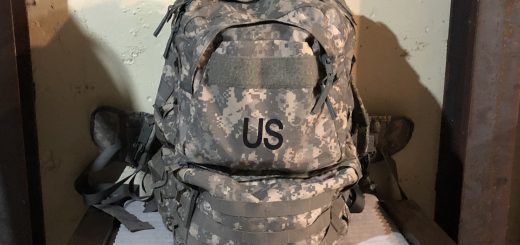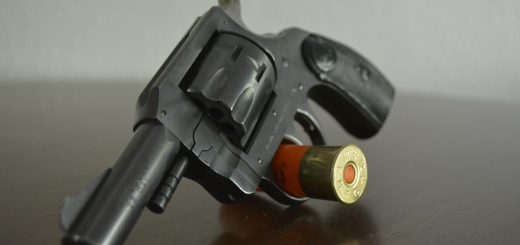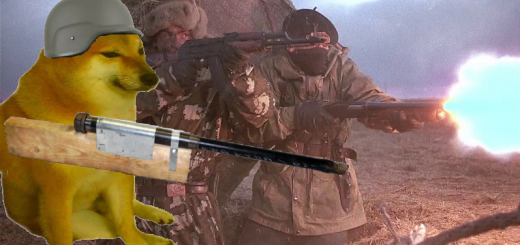Dueck Defense RBU Review

My path to an RDS-equipped handgun began one late, fall night in 2016 – I had just gotten my first NOD, a PVS-14, and was browsing YouTube trying to soak up as much knowledge as I could on the subject.
One of the topics that was of concern to me was shooting my pistol accurately while under NODs. After watching a video from Aaron Cowan of Sage Dynamics, my choices were clear: I either had to buy another weapon-mounted IR laser, or invest in a slide-mounted red dot. The dot would offer me benefits both during daylight hours and at night on the green screen, so that’s what I set my plans on.
Fast forward to summer 2017 – Cabelas ran a HUGE sale on Type-1 Trijicon RMRs which was, at the time, the standard for “duty-grade” slide-mounted pistol optics. I snatched one up immediately, and began a search for the best solution to get the dot onto the pistol with a minimum of downtime and cost.
Slide milling didn’t appeal to me due to the turnaround time and permanence – buying a new slide was costly and most reputable options were sold out at the time.
I determined that a rear dovetail RMR mount was the best solution for my needs, with options from Suarez, Raven Concealment and Dueck Defense being the front runners. I ended up choosing the Dueck Red-Dot Back Up (RBU) sight base, as I preferred its iron sight configuration over the others.
INSTALLATION
The install was a breeze. Lacking a workbench, vise, or sight tool, I took my Glock 19 to my preferred LGS for an install. It took them about five minutes to have the dovetail secured and the front sight removed – a huge amount of time saved compared to having a slide milled. From that point I simply used the included screws to mount the RMR to the RBU and I was in business with a red dot-capable handgun, at a fraction of the cost and time of slide milling.
USAGE
Since the installation, I’ve had about 5,500 rounds on the optic – about half of those shot in training classes, followed by casual range days and competition. During that time, the RBU has not come loose or shifted laterally in the dovetail. The optic itself has needed a short “break in” period twice: immediately following installation, and again after battery replacement at 1.5 years of constant on. During each break-in period, the dot was prone to flickering/shut off, but remedied after 50-100 rounds and was entirely malfunction-free for the remainder of use.

One of the design features of the RBU is the use of the integrated iron sights, both as backups should your dot go down and as a quick reference to bring the dot back into your vision should you lose it at any time. As such I zeroed my optic by co-witnessing it to the irons. So far, this hasty zero has proven itself to work both up close, and at distance – I have been able to score high 70’s to mid 80’s for most portions of the 700-Point Pistol Aggregate, and engage reduced C-zone steel as far as 65 yards under NODs. This zero has also worked well enough for the assorted steel targetry encountered in USPSA competitions, to include standard poppers and different variations of plate racks and Texas stars.
to use up close has simply never tried hard enough,
The backup irons work as advertised, even though the sight radius is EXTREMELY short. Though definitely not as accurate as traditional iron sights, they get the job done – I’ve used them as true backups in USPSA and training classes when my dot flickered off, and was able to keep A-zone hits within 15 yards and C-zone hits out to 50 yards on steel. I have never had to use them to re-acquire my dot during a course of fire.

Given its design, the RBU puts the RMR slightly higher above the slide than a milled configuration. I have not had significant time on a milled optic slide to draw a meaningful comparison, but I have not found the increased height-over-bore to cause any issues with accuracy or finding the dot on the draw/tracking the dot under recoil – on the contrary, the increased height seems to aid in picking up the dot faster during the presentation. Even with the slight height increase, the RMR/RBU combo carries comfortably appendix IWB and is almost unnoticeable.

HOLSTERS
Holster fitment is sometimes a concern with slide-mounted red dots – the RMR/RBU combo fit perfectly in my Safariland 6354DO, along with my PHLster Spotlight AIWB. While I have not been able to test the RBU with the latest-generation Safariland hooded duty holsters for red dot pistols, the RBU will be compatible with any OWB or IWB holster that is cut above the ejection port (Bladetech, PHLSter, Raven, etc).

RBU-Equipped Glock 19 in a Safariland 6354DO
FINAL THOUGHTS
With the advent of the Aimpoint P1, we are currently in the next phase of slide-mounted red dots- a phase which will see quite a few Type-1 and Type-2 RMRs on the secondary market as people make the transition to dedicated pistol optics. If you’re dipping into the pistol red dot world for the first time, I would highly recommend going the Aimpoint route – but if the new hotness is out of your reach, the RMR/RBU is a great combination of performance, convenience and reasonable price that will get you to a better place than irons. This setup is a great option for those that can’t (or don’t want to) permanently modify their handgun, or those who want to “try out” a dot setup before committing to a milled side.
The RBU is also available for the Smith & Wesson M&P handguns, with variants for both RMR and most other common mini-red dot sights (Vortex, Leupold, etc).




